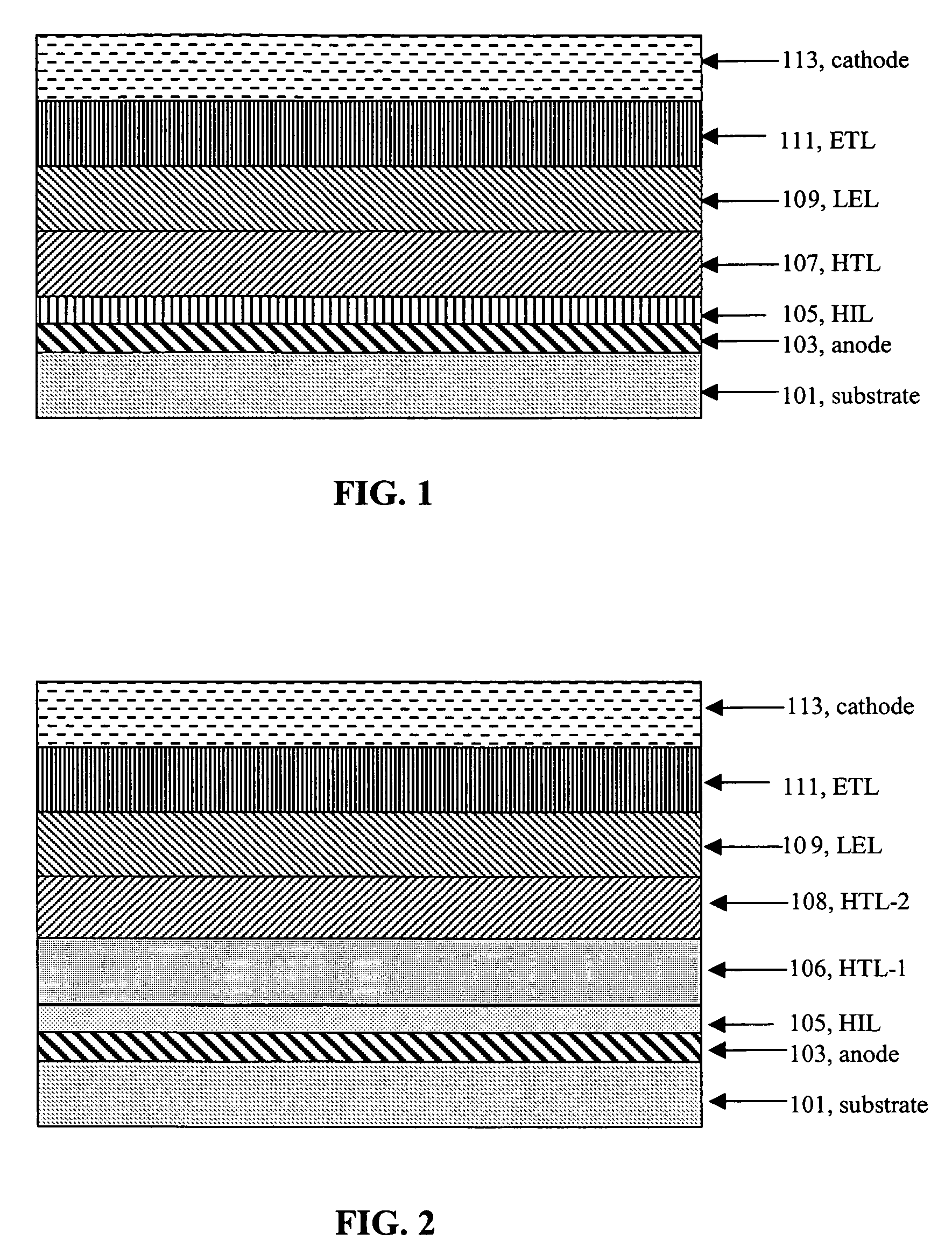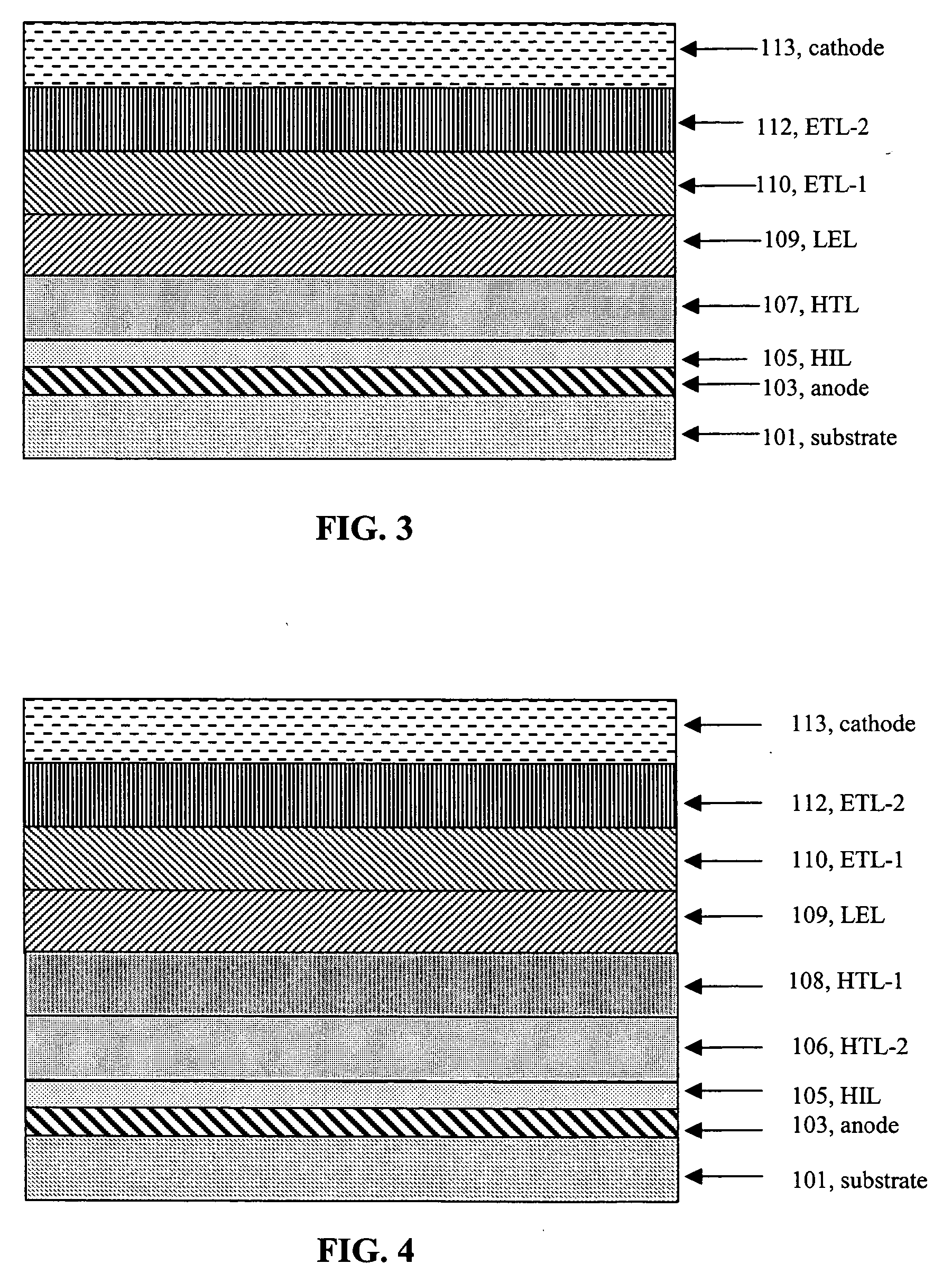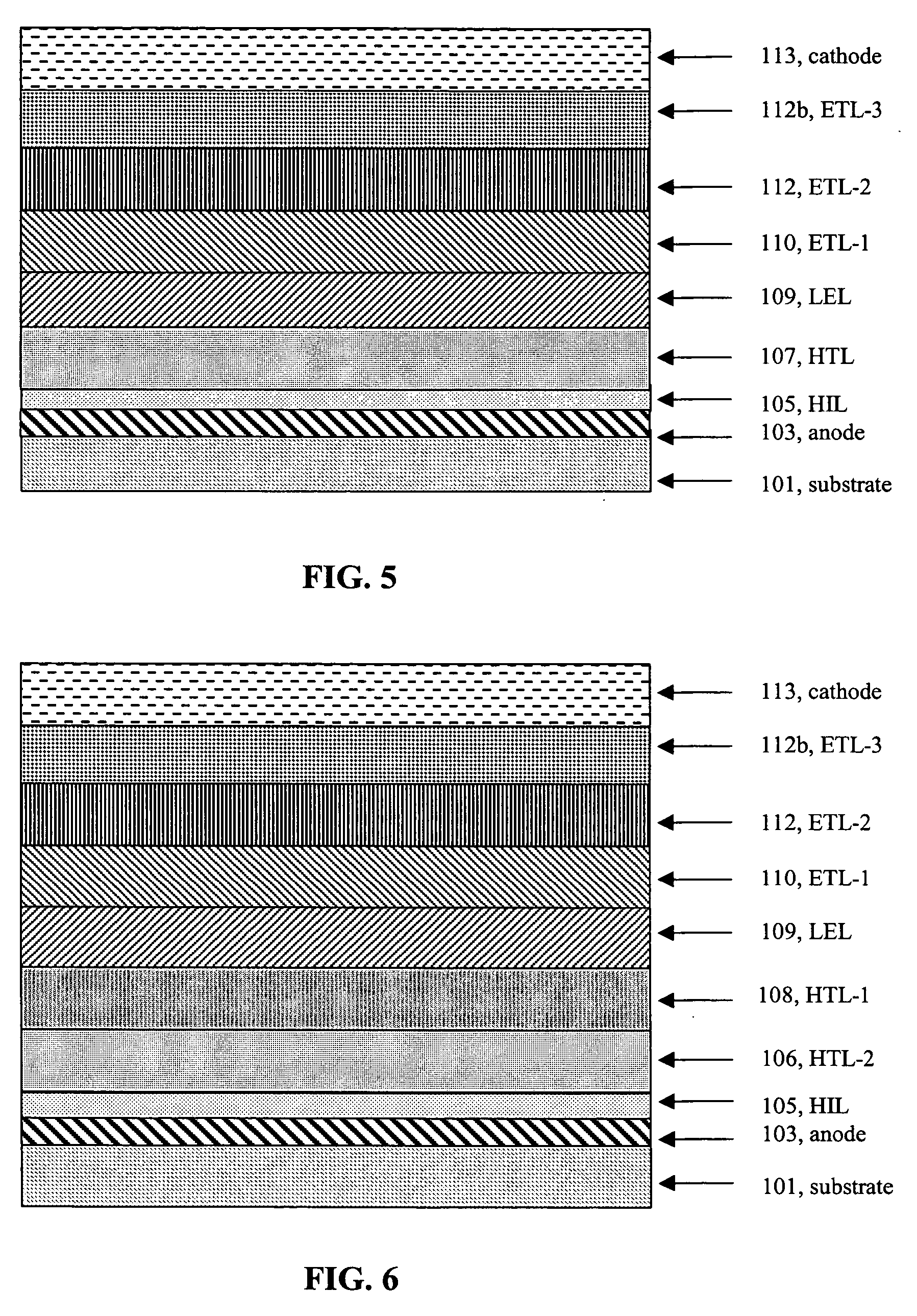White organic light-emitting devices with improved performance
a technology of white organic light and electroluminescent device, which is applied in the direction of discharge tube luminescnet screen, transportation and packaging, etc., can solve the problems of difficult control, devices do not have the desired el characteristics in terms of luminance, chromaticity and stability of components, etc., and achieve the effect of improving luminance and stability characteristics
- Summary
- Abstract
- Description
- Claims
- Application Information
AI Technical Summary
Benefits of technology
Problems solved by technology
Method used
Image
Examples
example 1
Synthesis (Scheme 1)
[0224] Preparation of compound (3): Under a nitrogen atmosphere, acetylenic compound (2) (2.0g, 12mMole), was dissolved in dimethylformamide (DMF) (100mL) and the solution cool to 0° C. Potassium t-butoxide (KButO) (1.4 g, 12mMole), was added and the mixture stirred well for approximately 15 minutes. To this mixture was then added the benzophenone (1) (3.53 g, 30mMole). Stirring was continued at 0° C. for approximately 30 minutes and then allowed to come to room temperature over a 1-hour period. At the end of this time the solution was cooled to 0° C. and the reaction treated with saturated sodium chloride (20mL). The mixture was then diluted with ethyl acetate, washed with 2N-HCl (×3), dried over MgSO4, filtered and concentrated under reduced pressure. The crude product was triturated with petroleum ether to give the product as an off-white solid. Yield of compound (3), 3.0 g.
[0225] Preparation of Inventive Compound, Inv-35: Compound (3) (7.0 g, 15mMole) was d...
example 2
EL Device Fabrication—Inventive And Comparative Examples
[0228] An EL device satisfying the requirements of the invention was constructed as Sample 1 in the following manner:
[0229] A glass substrate coated with an 85 nm layer of indium-tin oxide (ITO) as the anode was sequentially ultrasonicated in a commercial detergent, rinsed in deionized water, degreased in toluene vapor and exposed to oxygen plasma for about 1 min. [0230] a) Over the ITO was deposited a 1 nm fluorocarbon (CFx) hole-injecting layer (HIL) by plasma-assisted deposition of CHF3. [0231] b) A hole-transporting layer (HTL) of N,N′-di-1-naphthalenyl-N,N′-diphenyl-4,4′-diaminobiphenyl (NPB, Inv-24) having a thickness of 150 nm was then evaporated onto a). [0232] c) A 37.5 nm light-emitting layer (LEL) of the non-ELCs, tris(8-quinolinolato)aluminum (III) (AlQ3, Inv-27) and Inv-36, and the ELC, Inv-1 (see Tables 1 and 2 for concentration expressed as %) were then deposited onto the hole-transporting layer. [0233] d) A 37...
example 3
EL Device Fabrication—Inventive And Control Samples
[0242] A white EL device satisfying the requirements of the invention was constructed as Samples 7 through Sample 12 in the following manner:
[0243] A glass substrate coated with an 85 nm layer of indium-tin oxide (ITO) as the anode was sequentially ultrasonicated in a commercial detergent, rinsed in deionized water, degreased in toluene vapor and exposed to oxygen plasma for about 1 min. [0244] a) Over the ITO was deposited a 1 nm fluorocarbon (CFx) hole-injecting layer (HIL) by plasma-assisted deposition of CHF3. [0245] b) A hole-transporting layer (HTL) of N,N′-di-1-naphthalenyl-N,N′-diphenyl-4,4′-diaminobiphenyl (NPB, Inv-24) having a thickness of 140 nm was then evaporated onto a). [0246] c) A second layer having a thickness of 30 nm and comprising electroluminescent compound Inv-1 with the first bandgap, non-electroluminescent compound Inv-36 with the second bandgap and non-electroluminescent compound Inv-24 with the further ...
PUM
| Property | Measurement | Unit |
|---|---|---|
| thickness | aaaaa | aaaaa |
| work function | aaaaa | aaaaa |
| wavelengths | aaaaa | aaaaa |
Abstract
Description
Claims
Application Information
 Login to View More
Login to View More - Generate Ideas
- Intellectual Property
- Life Sciences
- Materials
- Tech Scout
- Unparalleled Data Quality
- Higher Quality Content
- 60% Fewer Hallucinations
Browse by: Latest US Patents, China's latest patents, Technical Efficacy Thesaurus, Application Domain, Technology Topic, Popular Technical Reports.
© 2025 PatSnap. All rights reserved.Legal|Privacy policy|Modern Slavery Act Transparency Statement|Sitemap|About US| Contact US: help@patsnap.com



